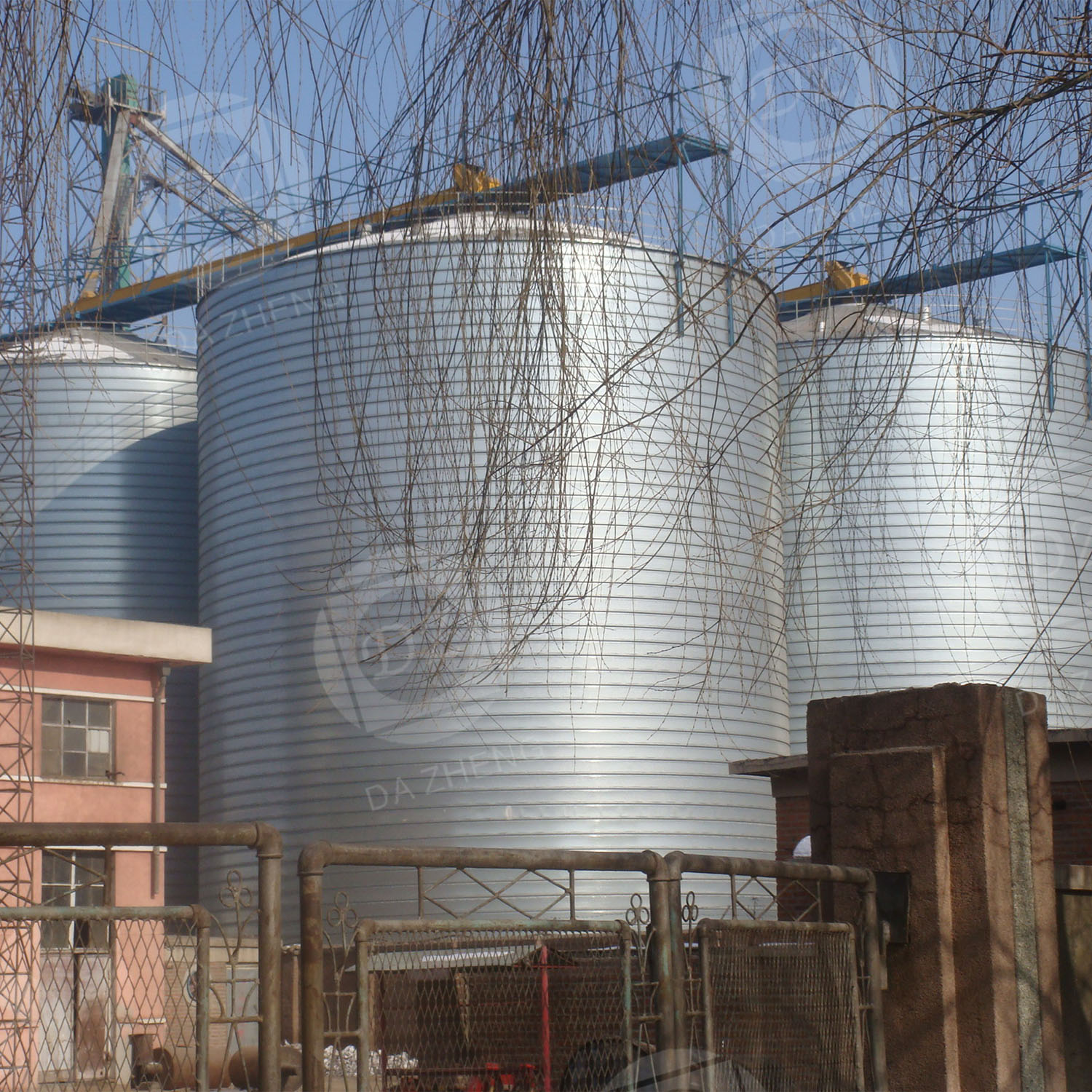Steel plate silos for storage have outstanding advantages. Sturdy structure, strong pressure resistance, adapt to a variety of environments. Good sealing, can effectively protect the quality of materials. The capacity can be customized according to the needs, and the space can be utilized efficiently. Short construction period, can be quickly put into use. Simple maintenance and low cost, high comprehensive benefits.
Performance Characteristics:
-Excellent anti-corrosion performance: the galvanized layer effectively resists the erosion of air, moisture and corrosive substances that may be contained in the feed materials, prolongs the service life of the silo, ensures long-term stable storage of feed materials, and reduces the maintenance cost and replacement frequency.
-Excellent sealing effect: the unique sealing structure design can effectively prevent outside moisture, pests and dust from entering the silo, keep the feed materials dry and clean, reduce the risk of mold and deterioration of raw materials, and protect the quality and safety of feed.
Efficient feeding and discharging system: Equipped with suitable conveying equipment, such as screw conveyor, it can realize the fast and smooth feeding and discharging of feed materials, improve the raw material turnover efficiency of feed manufacturers, and meet the needs of large-scale production.
Accurate material level monitoring: Built-in high-precision material level sensor can accurately monitor the change of the storage volume of feed materials in the silo in real time, which is convenient for enterprises to grasp the inventory situation in time, reasonably arrange the procurement and production plan, and avoid the shortage or backlog of raw materials.
Main technical parameters:
-Silo volume: can be customized according to the actual needs of customers, common specifications from dozens of cubic meters to thousands of cubic meters, such as 100 cubic meters, 500 cubic meters, 2,000 cubic meters, etc., to meet the requirements of different sizes of feed enterprises reserves.
Thickness of steel plate: the thickness of the silo wall is generally between 3 - 8 mm, which is reasonably determined according to the volume of the silo, height and the pressure it is subjected to, in order to ensure the structural strength while taking into account the cost-effectiveness.
-Maximum feeding speed: 50 - 200 tons per hour, depending on the power of the conveying equipment and pipeline diameter and other factors, to ensure that the raw materials into the warehouse quickly.
-Level monitoring accuracy: up to ±0.1 meters, providing reliable data support for accurate inventory management.
Main application areas:
-Mainly used in all kinds of feed production enterprises, including livestock and poultry feed mills, aquatic feed mills and so on. It is used for storing corn, soybean meal, gluten, fish meal and other common feed raw materials, providing stable and high-quality raw material supply guarantee for feed production, and is an indispensable and important link in the feed production industry chain.
Important tips:
-Installation site: choose a site with high terrain, good drainage and far away from pollution sources for installation, make sure the foundation is solid and can withstand the full load weight of the silo, and prevent the silo from being deformed or damaged due to the foundation settling.
-Regular maintenance: regularly check the integrity of the galvanized layer, if any damage timely repair; check whether the seals are aging, damaged, timely replacement; in and out of the material equipment maintenance, to ensure its normal operation, to extend the service life of the equipment.
Raw material management: before entering the warehouse, make sure the feed materials are dry, free of impurities and mold; strictly follow the principle of first-in-first-out for discharging to avoid the deterioration of raw materials due to long time accumulation.
-Safe operation: the operator should be professionally trained, familiar with the equipment operation process and safety precautions, in the process of equipment operation is strictly prohibited illegal operation, such as overloading feeding, running with faults, etc., to prevent the occurrence of safety accidents.







